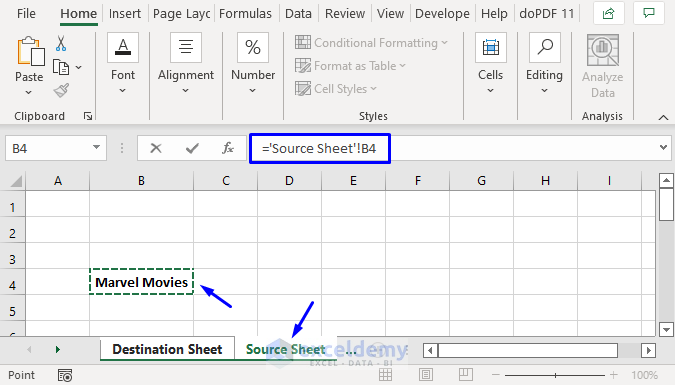Linking Excel Sheets: Easy Steps for Smooth Data Management

In the ever-evolving landscape of data management, linking Excel sheets has emerged as a pivotal skill for professionals who work with spreadsheets regularly. Whether you're dealing with financial modeling, inventory management, or project planning, the ability to connect and share data between multiple Excel sheets or even workbooks can significantly streamline your workflow, ensure data consistency, and enhance overall productivity. In this comprehensive guide, we'll explore the various methods to link Excel sheets, providing you with a step-by-step approach to mastering this essential technique.
Why Link Excel Sheets?

Before diving into the “how,” let’s understand the “why.” Linking Excel sheets:
- Reduces redundancy: By referencing data in one place, you avoid duplicating information across multiple sheets or workbooks, which can lead to discrepancies.
- Improves accuracy: With linked data, changes in the source are automatically reflected in all linked cells, ensuring that your data remains up-to-date.
- Saves time: Automating data connections means you spend less time manually updating figures across documents.
Methods to Link Excel Sheets

Let’s delve into the different methods for linking Excel sheets:
1. Linking within the Same Workbook

This is the most straightforward method where you link cells from one sheet to another within the same Excel file:
Using Direct Cell References
- Go to the destination cell where you want the linked data to appear.
- Type the equals sign (=), click the source sheet, and select the cell you wish to link.
This creates a reference like ='Sheet1'!A1, displaying the content of A1 from Sheet1 in your current cell.
Using the Paste Link Feature
- Copy the cell or range of cells from the source sheet.
- Right-click on the destination cell, go to 'Paste Special', then choose 'Paste Link'.
This method is especially useful when dealing with ranges of cells.
2. Linking Between Different Workbooks

Linking between different Excel files adds a layer of complexity but is crucial for organizational efficiency:
Using File Links
- Ensure both the source and destination workbooks are open.
- In the destination workbook, navigate to the cell where you want to link.
- Type the equals sign (=), go to the source workbook, select the cell or range, and hit Enter. The formula will look like
='[SourceWorkbook.xlsx]Sheet1'!A1.
3. Advanced Linking Techniques

Named Ranges
- Create a Named Range in your source sheet for easier referencing.
- To link using Named Ranges, you would type =NameOfRange instead of specific cell references.
Using the INDIRECT Function
- This function allows for dynamic linking based on cell values.
- Example:
=INDIRECT(“‘”&A1&“’!”&B1), where A1 contains the sheet name and B1 contains the cell reference.
Updating and Troubleshooting Linked Data

Managing linked data comes with its challenges:
Updating Links

- When opening a workbook with external links, Excel might ask if you want to update the links. Choose ‘Update’ to refresh the data.
- To update manually, go to ‘Data’ > ‘Edit Links’, and select ‘Update Values’.
Troubleshooting Common Issues

🔍 Note: Here are some common troubleshooting tips:
- Broken Links: If files are moved or renamed, links can break. Use ‘Edit Links’ to point to the new location.
- Disabled Update Links: Ensure that the ‘Update links on save’ option is enabled in the ‘Edit Links’ dialog box.
- Data Integrity: Ensure all linked workbooks are saved and updated frequently to maintain data accuracy.
Wrapping Up

As we wrap up our journey through Excel linking techniques, remember that mastering this skill not only streamlines your data management but also minimizes errors and enhances productivity. From basic cell references within the same workbook to complex dynamic links between different files, Excel provides a robust set of tools to manage data interconnectivity. By following the methods outlined in this guide, you’ve equipped yourself with the knowledge to navigate through the complexities of linked data in Excel.
Can I link sheets in different formats?

+
Yes, you can link data from different formats like CSV, TXT, or other Excel files. Ensure compatibility and data structure consistency to maintain accuracy.
What happens if the source file is deleted or renamed?

+
Excel will prompt you to update the link. If you can’t update, the linked data might not appear, or you’ll see an error indicating a broken link.
How do I link data if my source sheet is not in Excel?

+
You can import data from various sources like SQL databases or web queries into Excel, then link that data within Excel using the methods described above.



